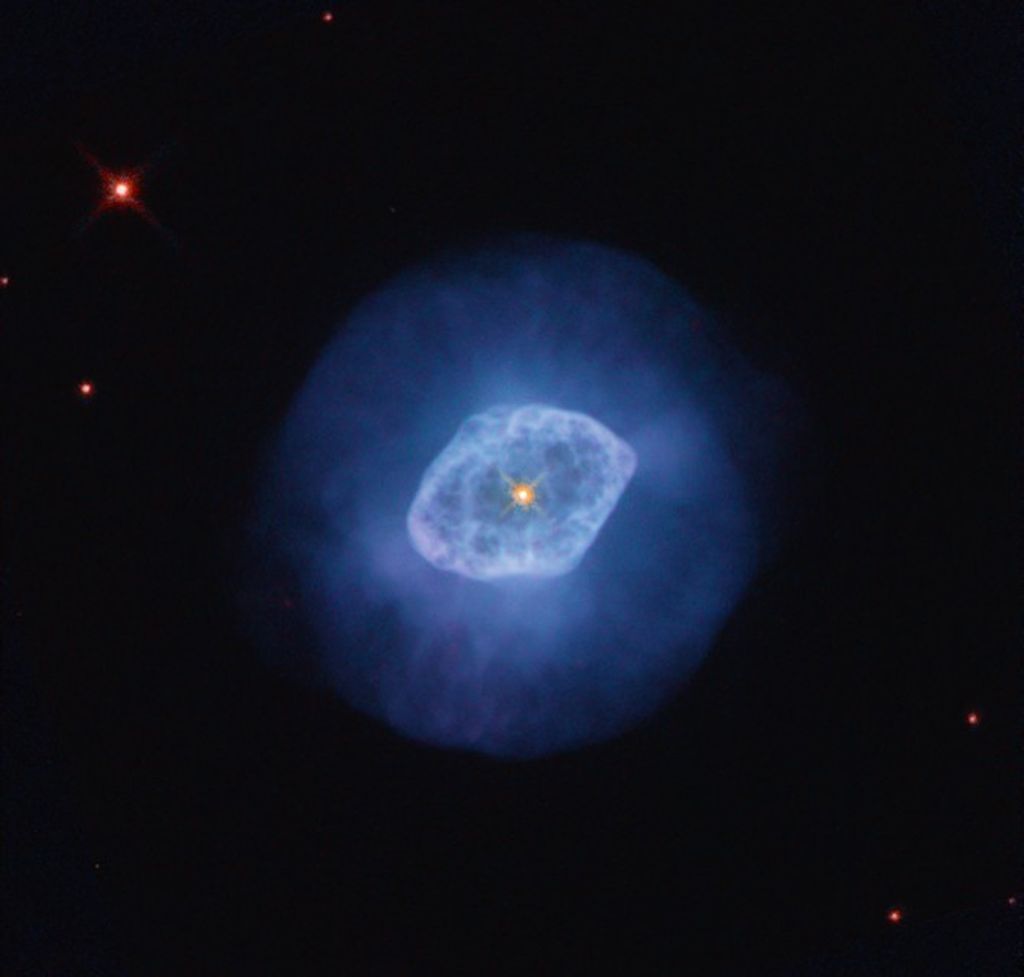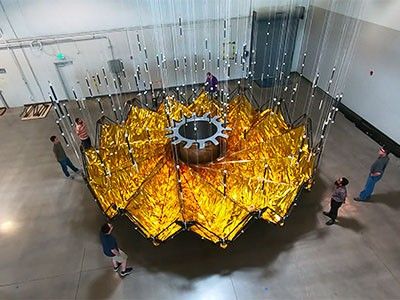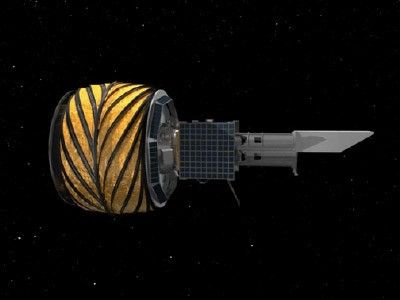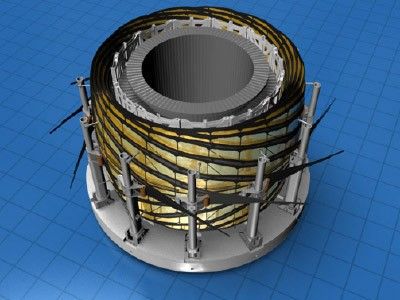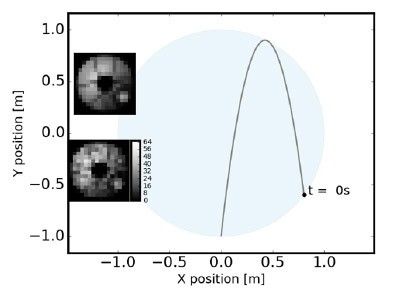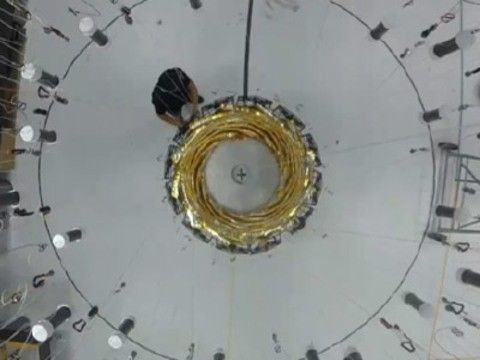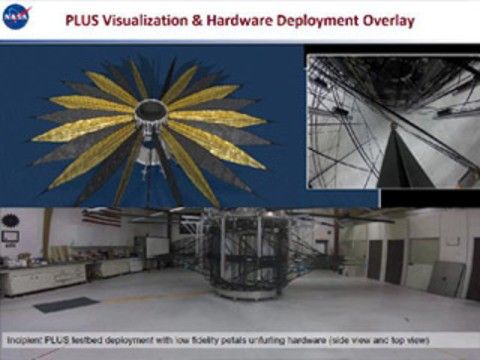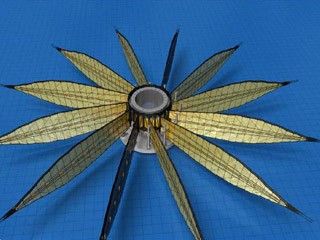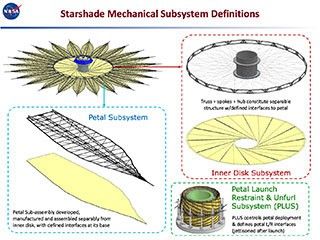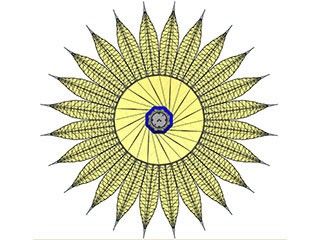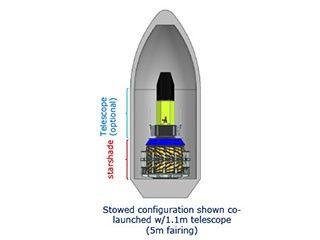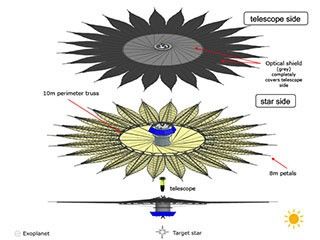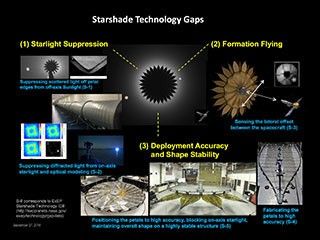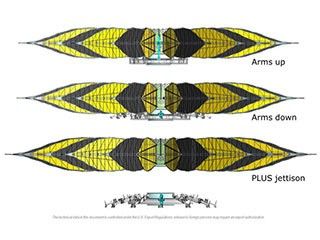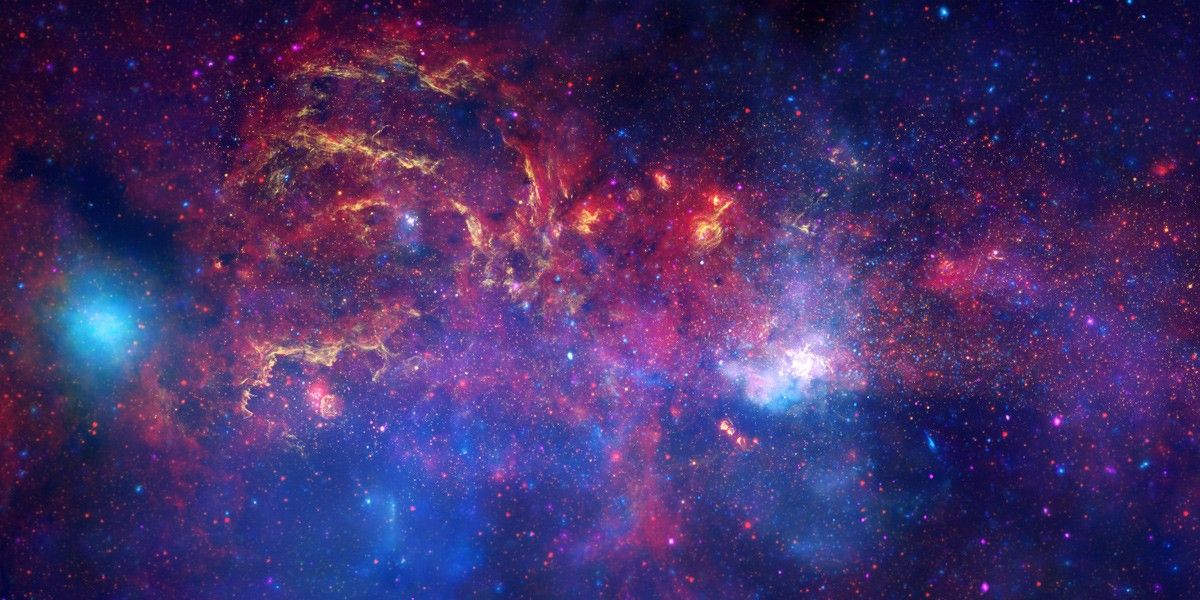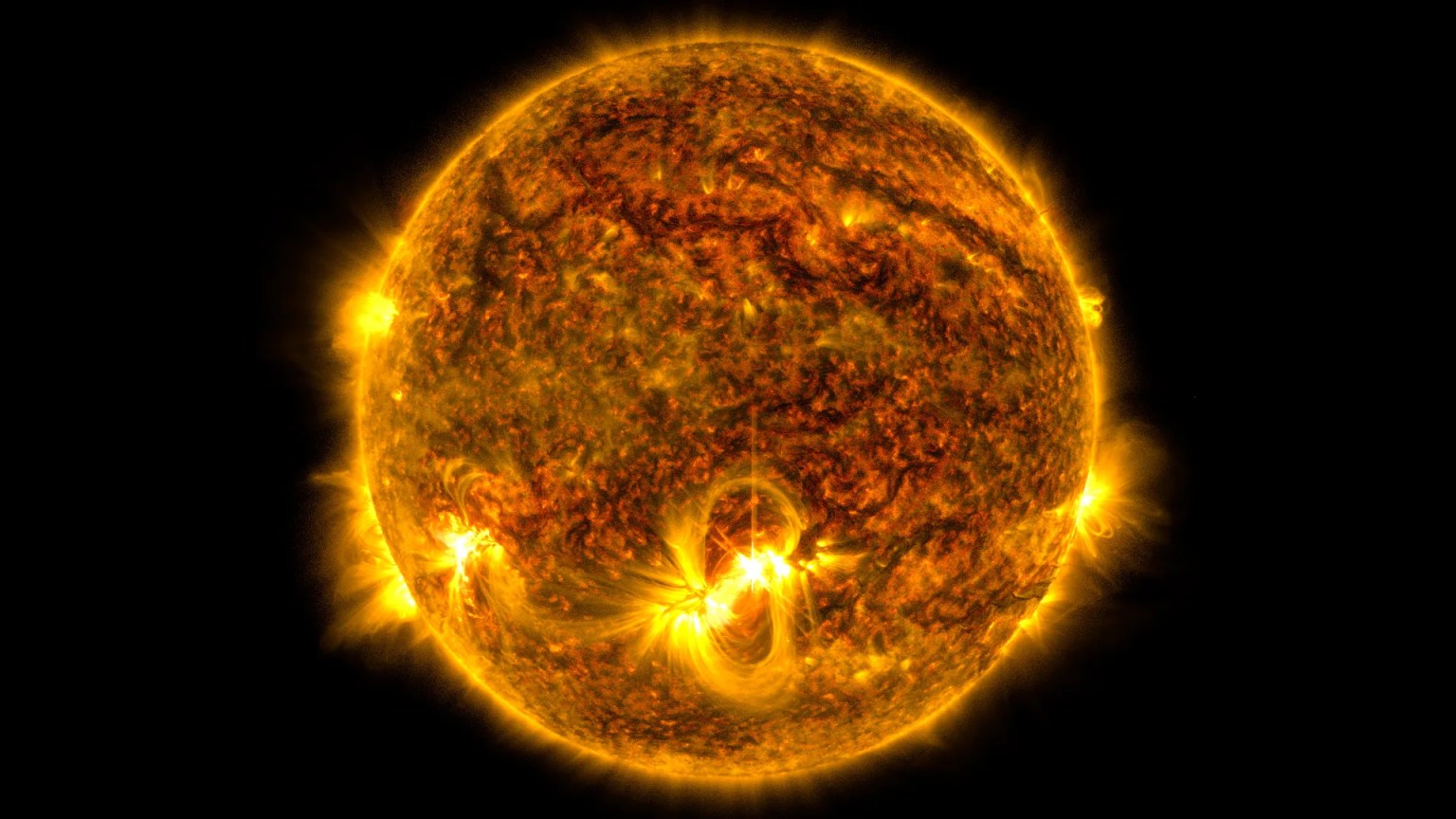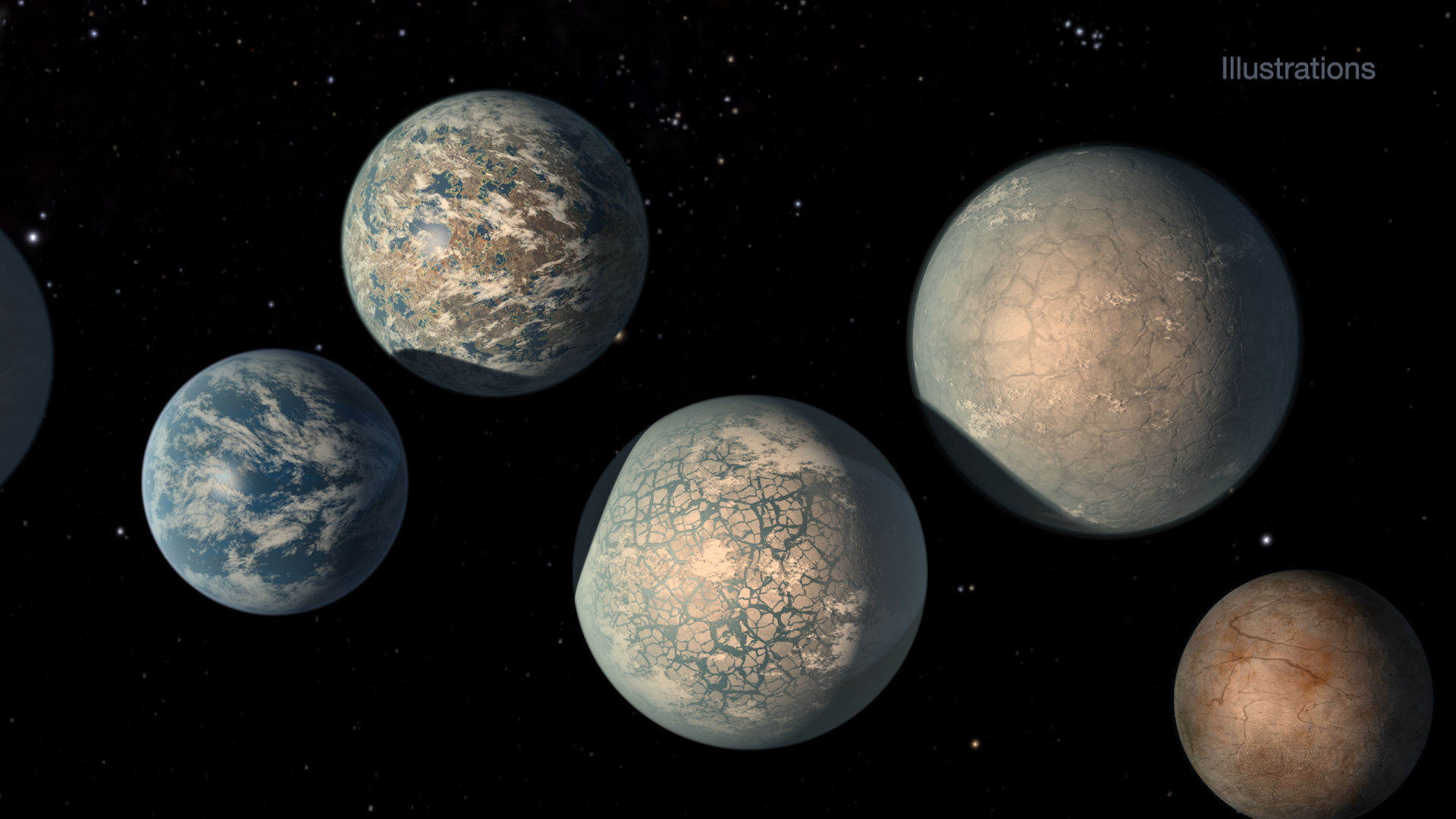Starshade Technology Development
The Exoplanet Exploration Program Charter identifies one of the Program’s critical functions to be to “…manage exoplanet-related technology initiatives, including the management of specifically directed technology activities, facilitation of a coordinated NASA Astrophysics technology identification/prioritization process, oversight of competitively-selected technology activities, and certification of technology milestones and or Technology Readiness Levels (TRLs).”1
A key method in the pursuit of these goals and objectives is the direct imaging of planets around other stars. Directly sampling the light from an exoplanet separately from that of its host star facilitates measurement of its size, orbit, albedo, and ground and atmospheric spectra, which provide clues to its habitability, and potentially could provide signatures of the presence of life itself. However, direct observation of small, rocky planets like Earth close enough to their host stars to harbor liquid water is very difficult due to the extreme faintness of the exoplanet relative to the very nearby star. The starlight must be suppressed, either interferometrically or by an occulter, to allow exoplanet detection. Occulters that are internal to the telescope are referred to as coronagraphs. Occulters that are external to the telescope are referred to as starshades.
Starshades benefit NASA by enabling and enhancing NASA’s capability to detect planets around other stars, characterize them, and search them for signs of life. They do this by dramatically extending the ‘field of regard’ of direct imaging studies towards small, rocky planets orbiting in the habitable zones of their host stars, the regions where liquid water can be sustained on the planets’ surfaces, and towards characterization of the surfaces and atmospheres of those planets.
In 2016, NASA’s Astrophysics Division Director approved a proposal by the ExEP to restructure its starshade-related technology development investments into a focused activity to bring starshade technology to Technical Readiness Level 5 (TRL5).2 This focused activity is called S5. In September 2018, NASA’s Astrophysics Division approved the plan to proceed with the implementation of S5 to address the three most critical technologies for Starshades. These technologies are: starlight suppression, formation sensing and control, and deployment accuracy and shape stability.
Videos
10m Starshade Inner Disk Deployment
This video shows the deployment of the 10m Inner Disk Subsystem prototype hardware in the test facility at Tendeg.
Starshade Rendezvous Mission Concept Animation
This animation depicts the on orbit separation and deployment of a Starshade System and Telescope System that were co-launched. This represents a potential mission concept.
Starshade Wrapped Architecture Deployment Concept
This animation shows the transition of the starshade from the stowed configuration to the deployed configuration including the eventually jettison of the Petal Launch and Unfurl Subsystem (PLUS).
This video shows a simulation of the translation of the out-of-band starlight (Arago spot) in the telescope camera used for lateral sensing and formation flying maneuvers.
5m Inner Disk Development Model Deployment
Top view of the deployment of a 5m inner disk subsystem including truss and optical shield.
PLUS Visualization & Hardware Deployment Overlay
Incipient PLUS testbed deployment with low fidelity petals unfurling hardware (side view and top view)
Starshade Deployment Animation
More Resources
1Exoplanet Exploration Program Charter, section 4.4
2Memo by Paul Hertz dated March 23, 2016.
















